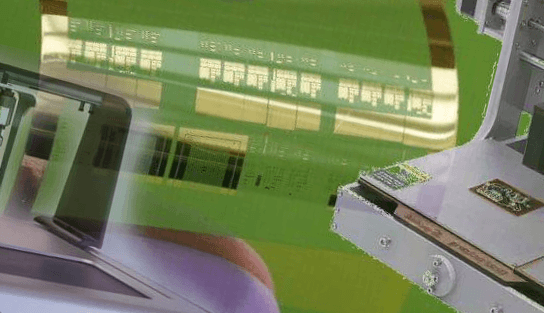The PCB printer — yet another useless machine?
January 27, 2017
on
on

Did you know that electronics would not be where it is today without a technique developed some 500,000 years ago? I don’t mean the invention of silicon which dates back even further, a few billion years or so, but engraving, “the practice of incising a design onto a hard, usually flat surface by cutting grooves into it”. (Thank you, Wikipedia.)
Printed circuit boards, or PCBs, can be made using various engraving techniques, be it chemical, mechanical or optical, and integrated circuits are engraved on silicon wafers.
Printing, a more than 2,000 year old invention, has also turned out pretty important for the electronics industry. First of all, because without it you would not have been able to read this fine piece of prose, but secondly because PCB manufacturing relies on it. The ‘P’ in PCB is currently extra hot thanks to the development of printers capable of producing PCBs without engraving, simply by squirting conductive ink on a hard, usually flat surface.
Printers that print electronic circuits instead of circuit boards are being developed too. Work is in progress to print a simple 4-bit microcontroller directly on cardboard. The goal is to create intelligent packaging, or smart clothes, or some other clever doohickey. Today people wonder why on earth you’d want a 4-bit processor, but in 1971, when Intel launched their 4004 4-bit powerhouse, it was a revolution that kept fighter planes in the air.
What would you prefer to have in your homelab? A printer printing printed circuit boards that you must populate yourself, or one that spits out fully functional circuits? Maybe we should just skip the PCB printer altogether and concentrate on the electronics printer?
Printed circuit boards, or PCBs, can be made using various engraving techniques, be it chemical, mechanical or optical, and integrated circuits are engraved on silicon wafers.
Printing, a more than 2,000 year old invention, has also turned out pretty important for the electronics industry. First of all, because without it you would not have been able to read this fine piece of prose, but secondly because PCB manufacturing relies on it. The ‘P’ in PCB is currently extra hot thanks to the development of printers capable of producing PCBs without engraving, simply by squirting conductive ink on a hard, usually flat surface.
Printers that print electronic circuits instead of circuit boards are being developed too. Work is in progress to print a simple 4-bit microcontroller directly on cardboard. The goal is to create intelligent packaging, or smart clothes, or some other clever doohickey. Today people wonder why on earth you’d want a 4-bit processor, but in 1971, when Intel launched their 4004 4-bit powerhouse, it was a revolution that kept fighter planes in the air.
What would you prefer to have in your homelab? A printer printing printed circuit boards that you must populate yourself, or one that spits out fully functional circuits? Maybe we should just skip the PCB printer altogether and concentrate on the electronics printer?
Read full article
Hide full article


Discussion (4 comments)